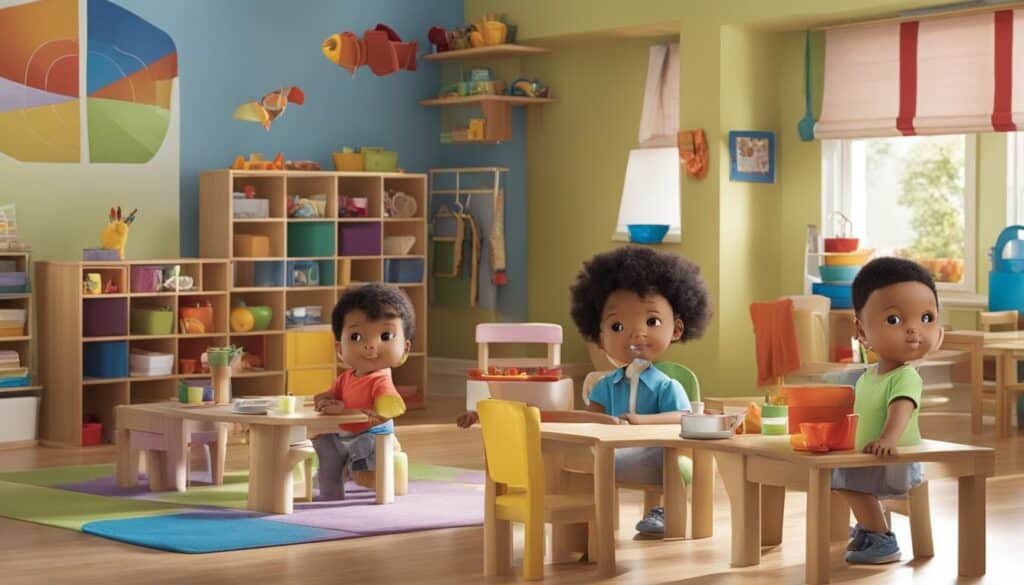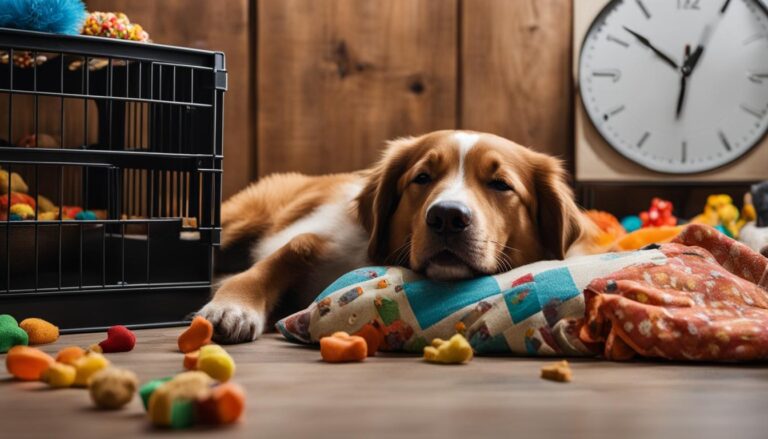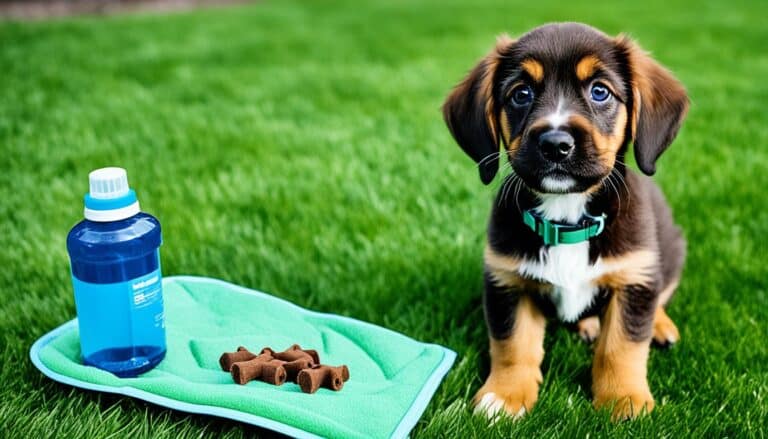When Should a Dog Be Potty Trained?
There’s nothing quite like the joy of bringing a new furry friend into your home. From the moment they wag their tail and give you that heartwarming puppy gaze, you know you’re in for a lifetime of unconditional love. But along with the cuddles and playtime comes the responsibility of potty training. Trust me, I’ve been there.
I remember the first day I brought home my adorable Labrador puppy, Max. As excited as I was, I quickly realized that potty training was a whole new adventure. From carpet accidents to restless nights, it wasn’t easy. But let me tell you, the satisfaction of seeing Max master the art of proper elimination was worth every effort.
So, when should a dog be potty trained? The answer is right from the start. According to experts, potty training should begin as soon as you bring your puppy or adult dog home. However, it’s important to remember that significant progress may not be expected until your furry friend is around 12 to 16 weeks old, as they need time to develop bladder and bowel control.
In my journey with Max, I learned that patience, commitment, and consistency are the keys to successful potty training. By establishing a routine, being prepared for accidents, and using positive reinforcement, you can guide your dog towards proper elimination habits.
In this article, I’ll share with you some essential tips and methods for potty training, whether you choose housetraining, potty pad training, or crate training. Together, we’ll navigate through this adventure and help you and your furry friend build a strong bond and a happy, accident-free home. Let’s get started!
Housetraining and Potty Pad Training
Housetraining is the traditional method of potty training, where the goal is to train the dog to eliminate outside. It requires taking the puppy outside regularly, especially after meals, naps, playtime, and other key moments. This establishes a consistent schedule for the puppy and helps them understand when and where to go potty. While housetraining requires patience and diligence, it is a highly effective method for potty training your puppy.
However, there are situations where going outside may not always be feasible. That’s where potty pad training comes in handy. Potty pad training involves teaching the dog to use a designated area inside the house, typically with the help of potty pads. This method can be especially useful for those who have limited access to outdoor spaces or specific circumstances that make going outside challenging, such as extreme weather conditions.
To start potty pad training, choose a confined area in your house where you want your puppy to eliminate. Place potty pads in that area and encourage your puppy to use them for their bathroom needs. Gradually reduce the number of potty pads and transition them to the desired elimination spot, whether it’s a specific room or an outdoor area. Consistency is key in this training method, just like in housetraining. Make sure to praise and reward your puppy every time they use the potty pads correctly.
Housetraining and potty pad training both rely on consistency, positive reinforcement, and establishing a routine. By creating a structured schedule for your puppy and providing clear signals for when and where they should go potty, you can effectively teach them proper elimination habits. Remember to be patient, as each puppy learns at their own pace.
Crate Training for Potty Training
Crate training is a highly effective method for potty training your puppy or adult dog. It provides a secure and den-like environment that helps promote appropriate elimination habits. When embarking on crate training, it is crucial to select a crate that is appropriately sized for your dog. The crate should be spacious enough for your dog to stand up, turn around, and lie down comfortably.
The primary goal of crate training is to prevent your dog from eliminating inside the crate and encourage them to hold it until they can be taken outside. Dogs naturally avoid soiling their sleeping area, making the crate an effective tool for potty training. By using the crate consistently, you can simplify the potty training process and establish a routine for your dog.
Not only does crate training aid in potty training, but it also provides numerous other benefits. The crate serves as a safe and secure space where your dog can retreat and relax. It can also facilitate travel, making it easier to transport your dog without the risk of accidents. In addition, crate training can be useful for aiding in injury rehabilitation or managing behavioral problems.
When introducing your dog to the crate, it’s essential to do so gradually and associate it with positive experiences. Make the crate a comfortable and inviting space by adding a soft bedding and toys. You can also treat your dog with rewards or meals in the crate to create a positive association.
To further aid in successful crate training, establish a regular feeding and potty schedule for your dog. By keeping a consistent routine, you can predict when your dog will need to eliminate and prevent accidents. Remember to praise and reward your dog for successfully eliminating outside their crate, reinforcing the desired behavior.

Establishing a Routine and Timing
Establishing a routine is essential for successful potty training. Puppies have limited bladder control, and their ability to hold urine increases with age. It is important to take your puppy outside every one to two hours, especially in the beginning, and gradually increase the intervals as they demonstrate progress.
Your puppy should be taken out first thing in the morning, last thing at night, after meals, playtime, naps, and other key moments. Consistency and timing are crucial, as they help your puppy associate certain times and activities with going to the bathroom. To reinforce this association, it is helpful to use a consistent potty word or signal, such as “go potty” or ringing a bell near the door.
Paying attention to timing is important for successful potty training. Feeding your puppy on a regular schedule helps regulate their elimination routine. By feeding them at consistent times throughout the day, you can predict when they will need to go outside to eliminate. This can help minimize accidents and build your puppy’s confidence in their potty training journey.

Tips for Establishing a Potty Training Routine:
- Create a schedule: Establish set times for meals, playtime, and potty breaks. Stick to this schedule as closely as possible to help your puppy develop a routine.
- Be consistent: Take your puppy to the same designated potty area each time. This helps them associate that spot with eliminating.
- Offer praise and rewards: When your puppy successfully eliminates in the right spot, immediately praise them and offer them a small treat. Reinforcing the desired behavior will encourage them to repeat it.
- Supervise and prevent accidents: Keep a close eye on your puppy during the potty training process. Supervision allows you to intervene and take them outside when you notice signs that they need to go. It also helps prevent accidents inside the house.
- Be patient: Potty training takes time and accidents are to be expected. Stay patient and consistent with your efforts, and your puppy will eventually learn.
By establishing a routine and paying attention to timing, you can greatly increase the success of your potty training efforts. Remember to be patient, consistent, and positive throughout the process. With time and practice, your puppy will learn proper elimination habits and become a well-trained companion.
Tips for Successful Potty Training
When it comes to potty training your dog, patience, consistency, and positive reinforcement are key. Punishing your dog for accidents can create fear and hinder progress. Instead, accidents should be treated as teaching moments. Take the soiled area outside and use it to mark the desired elimination spot. Remember to praise and reward your dog immediately after they eliminate in the appropriate spot. This will help reinforce the desired behavior.
During the potty training process, it’s important to stay vigilant and supervise your dog to minimize the chances of accidents. Keep an eye on their behavior and take them outside regularly, especially after meals, playtime, and naps. Consistency is crucial to solidify their potty training routine. By choosing a high-quality dog food and establishing a regular feeding schedule, you can contribute to consistent elimination patterns and make the potty training journey smoother.
With time, patience, and a proactive approach, potty training can be a rewarding experience for both you and your dog. Remember to be consistent in your training methods and reward your dog’s progress. By using positive reinforcement and avoiding punishment, you can help your dog develop good potty habits and strengthen the bond between you. So keep at it, and soon your furry friend will become a potty-trained superstar!






